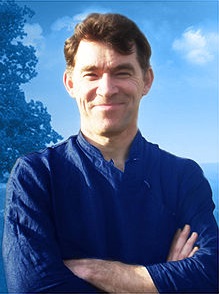Guest writer for Wake Up World
Over the last year or so, many people have asked me if the COVID pandemic has brought about post-traumatic growth (PTG)—that is, the long-term positive effects (including a greater appreciation for life and enhanced relationships) that often arise following traumatic experiences. The pandemic has probably been the world’s most traumatic collective experience since the Second World War. Some groups were exposed to higher levels of trauma than others, such as medical professionals, the seriously ill, and those who lost loved ones to the virus. For the general population, the pandemic brought the trauma of social isolation, existential disruption, and general anxiety.
[pro_ad_display_adzone id=”110028″]
A number of recent studies do indicate that significant post-traumatic growth has occurred. For example, a 2021 study of 327 residents of Hong Kong found that 18 percent experienced PTG in relation to the first COVID outbreak.1 A 2022 international study of 181 people found a much higher figure of 61 percent.2 (Perhaps the discrepancy between the two figures is caused by the fact that PTG normally takes some time to emerge, and the second study is more recent. The first study was also carried out while the pandemic was still in an intense phase.) Other studies have focused on specific groups and found significant levels of pandemic-related PTG in nurses and other frontline medical personnel.3
PTG and the Great Resignation
However, one of the most overt signs of PTG related to the pandemic may be what has been called “The Great Resignation.” This term refers to the wave of job resignations that have occurred during the pandemic. Over the past year, a record number of Americans have quit their jobs, and figures show a similar trend in countries such as the UK, Australia, France, Italy, and the Netherlands.
Research points to an increasing level of dissatisfaction with working conditions and a widespread desire to embrace new professional challenges. A recent survey in Singapore found that over half of workers didn’t plan on staying in their current jobs, and almost a quarter had already made plans to leave. Other studies have found that the intention to look for a new job has grown steadily over the past year.
It’s very significant that one of the five main areas in which PTG expresses itself is a sense of “new possibilities in life.” With post-traumatic growth, people feel that the world is more open to them, with more opportunities. They feel less affected by inertia and more capable of freeing themselves from familiarity and taking those opportunities. A second area of “personal strength” is also probably related, in that PTG leads to greater self-confidence and resilience, which emboldens people to take risks and embrace new adventures.
Transformation through turmoil
A shift in careers has emerged as a theme in my own research into transformational experiences. In my recent book Extraordinary Awakenings, I investigated a very intense form of PTG, which I call “transformation through turmoil.” While PTG is usually a gradual, long-term process, transformation through turmoil (or TTT) often occurs in a sudden and dramatic way, in a single moment of transformation. It involves a radical change of personality, so great that people sometimes feel as if they are a different person living in the same body. Although TTT is much less common than PTG, it is associated with traumatic experiences such as addiction, severe depression, a diagnosis of cancer, and bereavement. I have also found many cases amongst soldiers and prisoners.
Once people have processed their initial phase of transformation and feel able to resume their active lives, they are often reluctant to return to their previous jobs. They feel a strong impulse to live in a more meaningful and altruistic way. They are no longer so interested in becoming wealthy or successful or in climbing a career ladder up to a higher salary and more powerful position. Their main orientation is not to take from the world but to give.
For example, I interviewed a woman called Irene, who was diagnosed with breast cancer and told she might only have a few months left to live. Irene reacted to her diagnosis in an unusual way. As she told me, “I thought, ‘I’m just so lucky to be alive.’ The air was so clean and fresh, and everything I looked at seemed so vibrant and vivid. I had a tremendous feeling of connectedness. It was really intense for the first few weeks, and it has remained ever since.”
Irene’s cancer went into remission, but she retained her heightened awareness. She felt a new sense of connection to other people and to nature and a new enjoyment of solitude. She no longer felt comfortable in her previous role as an IT Manager for a medical company. She gave up her job and retrained as a counselor and therapist.
I also described the case of Gill Hicks, who was seriously injured in a terrorist attack in London in 2005. At the time, she was working as a designer and architect. She came close to death in the attack, and both her legs were amputated below the knee. On recovery, she resigned from her job to take a role as an ambassador for a peace charity. Similarly, I interviewed a man who experienced TTT due to alcoholism. After recovery, he gave up his job as an architect and went to university to study psychology.
In my view, therefore, it’s almost certain that the Great Resignation is a sign that the pandemic has led to significant personal growth. When life is running comfortably and smoothly, we tend to stick to the same routines and familiar experiences and settle for what we know. Sometimes there needs to be a rupture of the normal to shift us out of our complacency and comfort. Sometimes we need to be reminded that life is temporary and fragile and that we have the freedom and responsibility to realize our potential and live more fully. That’s how growth takes place.
References:
1. Lau BHP, Chan CLW and Ng SM (2021) Post-traumatic Growth in the First COVID Outbreak in Hong Kong. Front. Psychol. 12:675132. doi: 10.3389/fpsyg.2021.675132
2. Xie, C.-S.; Kim, Y. Post-Traumatic Growth during COVID-19: The Role of Perceived Social Support, Personality, and Coping Strategies. Healthcare 2022, 10, 224. https://doi.org/10.3390/ healthcare10020224
3. Chen, R.; Sun, C.; Chen, J.; Jen, H.; Kang, X.L.; Kao, C.; Chou, K. A Large-Scale Survey on Trauma, Burnout, and Posttraumatic Growth among Nurses during the COVID-19 Pandemic. Int. J. Ment. Health Nurs. 2020, 30, 102–116. [CrossRef] [PubMed]; Cui, P.P.; Wang, P.P.; Wang, K.; Ping, Z.; Wang, P.; Chen, C. Post-traumatic growth and influencing factors among frontline nurses fighting against COVID-19, Occupational and Environmental Medicine 2021;78:129-135.
Recommended articles by Steve Taylor, Ph.D:
- Hypnotic Healing: What is Responsible for the Placebo Effect and Hypnosis?
- Beyond Religion: Will Human Beings Ever Transcend the Need for Religions?
- The Transformational Effects of Bereavement
- Post-Traumatic Creativity: How Psychological Turmoil Can Unlock Our Creative Potential
- The Meaning of Life May Be Life Itself
- Spiritual Depression
- Do Psi Phenomena Exist? A Debate (Part One)
- Do Psi Phenomena Exist? The Debate Continues
- David Ditchfield’s Remarkable Near Death Experience
About the author:
Steve Taylor is a senior lecturer in Psychology at Leeds Beckett University, UK. His latest books in the US are The Calm Center and Back to Sanity: Healing the Madness of the Human Mind. He is also the author of The Fall, Waking From Sleep, and Out Of The Darkness. His books have been published in 19 languages. His research has appeared in The Journal of Transpersonal Psychology, The Journal of Consciousness Studies, The Transpersonal Psychology Review, The International Journal of Transpersonal Studies, as well as the popular media in the UK, including on BBC World TV, The Guardian, and The Independent.
Connect with Steve at StevenMTaylor.com.
[pro_ad_display_adzone id=”110027″]








